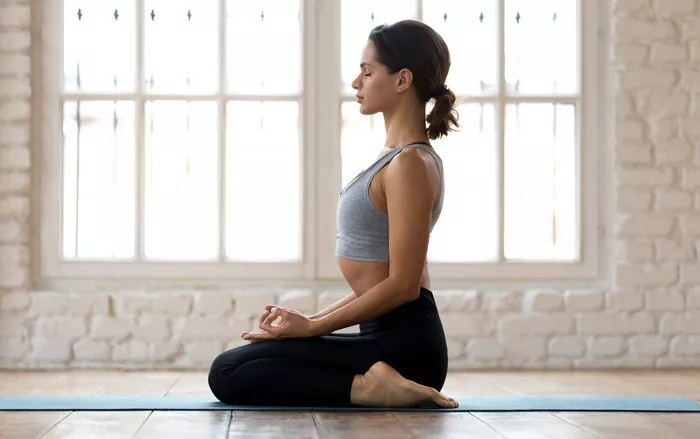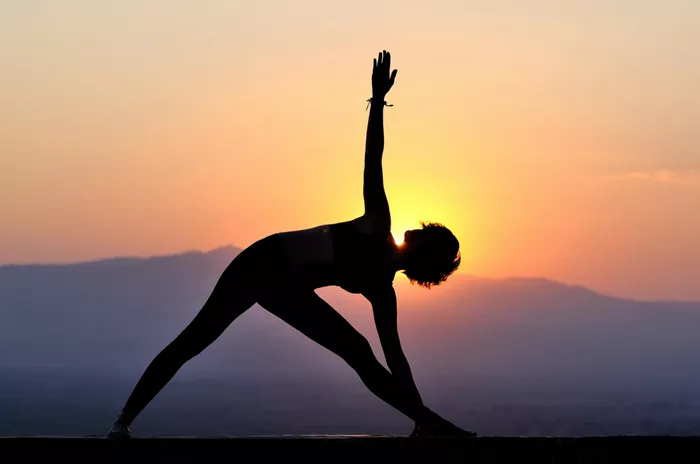Pregnancy is a period of profound physical and emotional transformation for women. During this time, maintaining a healthy lifestyle is of utmost importance for the well – being of both the expectant mother and the developing fetus. Hatha yoga, with its gentle combination of physical postures (asanas), breathing techniques (pranayama), and relaxation practices, has emerged as a popular choice among pregnant women. However, the question of its safety remains a primary concern.
Safety Precautions for Hatha Yoga During Pregnancy
Consultation with Healthcare Pro
Before integrating Hatha yoga into a pregnancy routine, seeking advice from a healthcare provider is not just a recommendation but an absolute necessity. During pregnancy, a woman’s body undergoes numerous physiological changes, and each pregnancy is unique. A healthcare provider, whether it’s an obstetrician, midwife, or other qualified medical professional, has the expertise to conduct a thorough and comprehensive evaluation of the woman’s health status. This evaluation encompasses a detailed review of her medical history, current physical condition, and any pre – existing medical issues.
By carefully considering these factors, the healthcare provider can identify potential risks and complications that could be exacerbated by yoga practice during pregnancy. For instance, they will assess the woman’s cardiovascular health, joint flexibility, and any underlying conditions like diabetes or hypertension, all of which can impact how her body responds to the physical demands of Hatha yoga.
This in – depth assessment is of utmost importance as it empowers the healthcare provider to offer highly personalized guidance. Based on their evaluation, they can determine whether Hatha yoga is a safe and suitable activity for the individual during her pregnancy. For some women, Hatha yoga can be a wonderful way to maintain physical fitness, reduce stress, and prepare the body for childbirth. However, for others, especially those with a history of high – risk pregnancies, the situation is more complex.
Women with placenta previa, where the placenta is positioned low in the uterus and may cover the cervix, are at a higher risk of bleeding during physical activity. Similarly, those with a history of preterm birth need to be extremely cautious as certain yoga poses or movements might potentially trigger uterine contractions. In such cases, the healthcare provider may recommend modifications to the yoga practice, suggest alternative exercises, or even advise against practicing Hatha yoga altogether to ensure the health and safety of both the mother and the baby.
Importance of Qualified Instructors
Practicing Hatha yoga during pregnancy should always be under the supervision of a qualified instructor with experience in prenatal yoga. These instructors are trained to understand the unique physiological changes that occur during pregnancy. They can modify poses to adapt to the evolving needs of the pregnant body, ensuring that each asana is performed in a safe and effective manner. For instance, an experienced instructor will know how to adjust the alignment of poses to accommodate the changing center of gravity and the increased laxity of ligaments during pregnancy, thus minimizing the risk of injury.
Poses to Avoid
Inversions: Inversions like the Headstand (Sirsasana) and Shoulderstand (Sarvangasana) are generally contraindicated during pregnancy, particularly in the second and third trimesters. In these poses, the body is inverted, which can cause increased pressure on the abdomen. This elevated pressure may disrupt the blood circulation to the uterus, potentially affecting the oxygen and nutrient supply to the developing fetus.
Deep Twists: As the pregnancy progresses and the uterus expands, deep twists should be either avoided or significantly modified. Deep twists can exert excessive pressure on the growing uterus, which may not be safe for the baby. However, in the first trimester, gentle twists, performed with extreme care and in a controlled manner, may be tolerated as the uterus is still relatively small.
Abdominal Compression: Poses that involve direct compression of the abdomen, such as the Full Boat Pose (Navasana), should be avoided as the pregnancy advances. Direct abdominal compression can put pressure on the fetus and may interfere with the normal growth and development of the baby.
Listening to the Body
Every pregnant woman’s body responds differently to yoga practice. It is crucial for women to pay close attention to their bodies during Hatha yoga sessions. If a particular pose causes pain, discomfort, or shortness of breath, it is a clear sign to stop immediately. Additionally, taking regular breaks during the practice is essential to prevent overexertion. Pregnant women should never push their bodies beyond their limits, as this can lead to injury or stress on the body and the baby.
Modifications for Hatha Yoga During Pregnancy
Utilizing Props
Props such as yoga blocks, straps, and bolsters are invaluable during pregnancy yoga. They provide additional support and stability, making it easier for pregnant women to perform poses safely. For example, when attempting a Forward Fold (Uttanasana), a yoga block can be placed on the floor to help the woman reach the ground without straining her back or putting excessive pressure on her abdomen.
Adapting Poses
Supported Poses: Instead of attempting poses that require balance on one leg, like the Warrior III Pose (Virabhadrasana III), pregnant women can opt for supported versions. Standing against a wall or holding onto a stable chair for support can provide the necessary stability and reduce the risk of falling, which is particularly important as the center of gravity shifts during pregnancy.
Gentler Stretches: Stretches can be adjusted to be less intense. In a Hamstring Stretch, for example, a pregnant woman can use a strap to hold her foot instead of reaching for it directly. This modification helps to reduce the strain on the back and abdomen, which are more vulnerable during pregnancy.
Seated and Standing Poses: Seated and standing poses are generally considered safer during pregnancy as they do not exert as much pressure on the abdomen. Poses like the Easy Pose (Sukhasana) and the Standing Forward Bend (Trikonasana) can be practiced with appropriate modifications. In the Standing Forward Bend, for instance, keeping the knees slightly bent can reduce the stretch on the hamstrings and lower back, making the pose more comfortable and safe for pregnant women.
Conclusion
In conclusion, Hatha yoga can be a safe and highly beneficial practice during pregnancy when approached with the right precautions. The physical and mental benefits it offers, such as improved flexibility, reduced stress, and enhanced circulation, can significantly contribute to a healthier and more enjoyable pregnancy experience. However, it is imperative that pregnant women consult with their healthcare providers, practice under the guidance of qualified prenatal yoga instructors, and make the necessary modifications to poses. By following these guidelines, pregnant women can safely embrace the many advantages of Hatha yoga and enhance their overall well – being during this special time in their lives. So, to answer the question “Is Hatha Yoga Safe During Pregnancy? ”, the answer is a resounding yes, as long as the proper safety measures are adhered to.i























